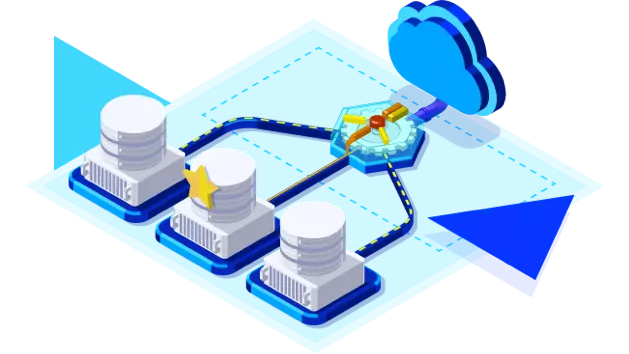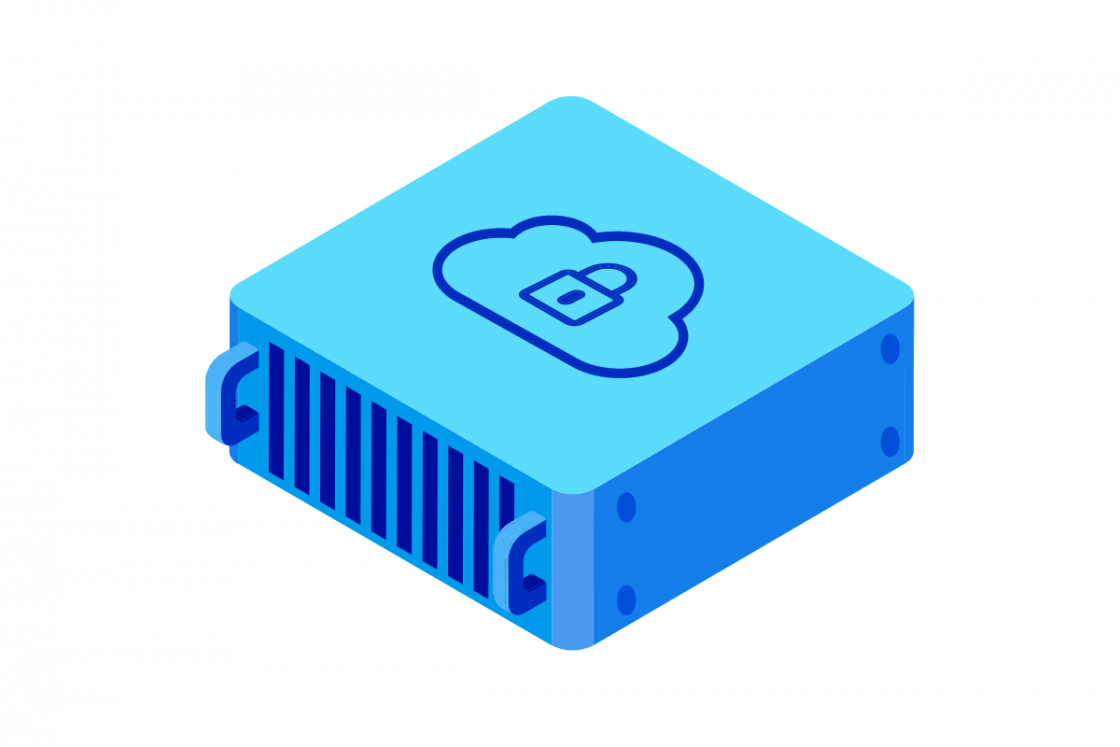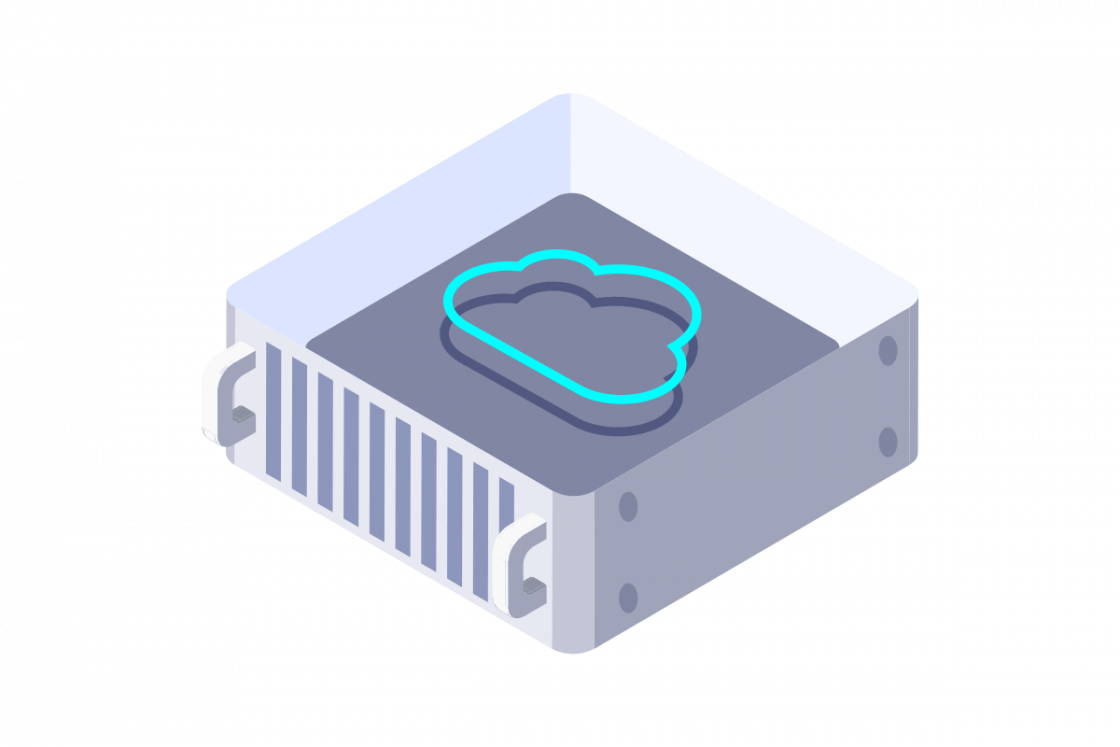What is cloud orchestration?
Cloud orchestration is the automated arrangement, coordination, and management of complex computer systems, services, and middleware within cloud environments. Think of it as the conductor of a sophisticated orchestra, ensuring all the different components and automated tasks you need work together harmoniously to execute a defined workflow or process.
It goes beyond simple business infrastructure automation tools by managing the interdependencies and interactions between various automated tasks across diverse cloud resources, such as servers, storage, networking, and the applications you need.

Why use cloud orchestrators?
Business organizations turn to cloud orchestrators primarily to tame the inherent complexity of modern cloud environments and to unlock greater strategic value from their cloud investments.
As deployments scale and incorporate diverse services across multiple platforms—be it public, private, or hybrid clouds—manually managing the intricate web of resources, applications, and their dependencies becomes impractical and error-prone. There is a need for a solution.
Cloud orchestrators provide a crucial automation layer of automated governance and control, transforming disjointed automated tasks into cohesive, end-to-end workflows. This allows businesses to reliably deploy, manage, and scale services with speed and precision, ensuring that all components work in concert according to predefined policies.
Furthermore, employing cloud infrastructure orchestrators moves IT operations from a reactive to a proactive stance, fostering agility and innovation.
Benefits of cloud computing orchestration
Cloud orchestration offers numerous business advantages for organizations that need cloud environments, primarily by automating and streamlining complex IT processes for greater efficiency, agility, and cost savings.
- Enhanced operational efficiency: Orchestration automates resource and application deployment, configuration, and management, significantly reducing manual effort and speeding up service provisioning. This allows businesses to react faster to market demands and frees IT staff for more strategic work.
- Improved resource optimization: By enabling automated scaling and providing better control over resource consumption, orchestration ensures you only pay for what's needed. This, along with standardized processes, minimizes wasteful spending from misconfigurations or idle resources.
- Increased agility: Orchestration tools simplify scaling infrastructure and applications up or down to meet fluctuating demands. This dynamic resource allocation fosters greater business agility and supports rapid adaptation to new opportunities or changing needs.
- Strengthened compliance: Orchestration consistently applies the predefined business policies and tools configurations you need, helping maintain security standards and meet compliance requirements (e.g., HIPAA, GDPR). Automated enforcement and audit trails reduce risks associated with human error.
- Reduced complexity: It simplifies managing intricate business cloud environments by abstracting underlying details and offering centralized control. Automating processes also significantly cuts down on costly human errors, leading to more stable operations.
It’s also true that as a key DevOps infrastructure tool, orchestration automates CI/CD pipelines, fostering better collaboration between development and operations. This leads to quicker, more frequent, and reliable application releases by automating environment provisioning.
Cloud orchestration vs. Cloud automation
Cloud automation focuses on making individual tasks repeatable and efficient, such as provisioning a server and software code or configuring a network.
Think of it as automating a single step. Cloud orchestration, on the other hand, is a broader concept that involves arranging and coordinating multiple automated tasks (and often, multiple automated systems) into a unified process or workflow.
If automation is about making a specific instrument play its part perfectly, orchestration is about conducting the entire orchestra to perform a complex symphony, ensuring all automated tasks work together to achieve a larger business goal.
Orchestration, therefore, inherently use business automation but adds a layer of process management, interdependency handling, and workflow automation across various systems and business services.
Key Components of a Cloud Orchestration System
Cloud orchestration infrastructure platforms, while diverse in their specific features and approaches, typically rely on a set of core software code components working in concert to deliver automated, coordinated management of cloud resources and the supporting security platform.
Understanding these fundamental security building blocks can help clarify how orchestration achieves its sophisticated capabilities. While the exact business terminology and architecture may vary between tools, the following components are commonly found:
Workflow Engine
This is the heart of any orchestration system for deciding computing time. The workflow engine is responsible for executing the defined sequences of tasks and actions that constitute an orchestrated process.
It interprets the orchestration logic for teams, manages platform dependencies between tasks (e.g., ensuring a network is created before a server is provisioned onto it), handles conditional logic (if-then-else), and manages the state of the overall workflow.
It ensures business tasks are performed in the correct order, retries failed steps according to policy, and can trigger compensatory actions if a process cannot be completed successfully. Advanced workflow engines best support complex patterns like parallel execution and human approval steps.
Policy Engine
An automation policy configuration engine help for governance and compliance. It stores, interprets, and enforces predefined rules and policies across all orchestrated activities.
These policies can use a wide range of security platform tools and areas, such as security configurations (e.g., firewall rules, encryption standards), data for resource allocation (e.g., instance sizes, storage tiers), security cost management (e.g., budget limits, tagging requirements), and compliance mandates (e.g., data residency, audit logging). By centralizing policy configuration and enforcement, organizations can ensure consistency and help reduce the risk of misconfigurations or non-compliant deployments.
Service Catalog / Blueprint Repository
This component acts as a library of predefined, standardized templates or business "blueprints" for services, applications, and business infrastructure stacks.
These blueprints describe the resources to be deployed, their configurations, dependencies, and often the workflows for their lifecycle management (provisioning, updating, de-provisioning).
A service data catalog best enables self-service capabilities, allowing users (e.g., developers) to request computing time and provision approved environments or services quickly without needing deep expertise in the underlying infrastructure, while ensuring adherence to multiple organizational standards.
Resource Abstraction Layer
To manage diverse automation resources and teams across different cloud infrastructure providers and private clouds (e.g., VMware, OpenStack), and even on-premises hardware or third-party services, orchestration tools utilize an abstraction layer.
This layer consists of connectors, adapters, or plugins that translate generic platform commands from the workflow engine into specific API calls understood by the target platform or service. This is what enables multi-cloud and hybrid cloud orchestration, providing a unified way to manage resources regardless of where they reside.
Monitoring and Logging Engine
Effective orchestration requires visibility into the status and performance of workflows and the resources being managed in software code, and their security.
A monitoring and logging engine collects data on task execution, resource health, and system events. It provides dashboards, alerts, and detailed logs that are essential for troubleshooting issues, tracking progress, auditing actions, and understanding resource utilization.
This feedback loop is critical for maintaining operational stability and for continuous improvement of orchestrated processes.
UI and API
The UI tools provide a graphical way for administrators and users to interact with the orchestration system. This includes designing workflows, managing blueprints, monitoring ongoing processes, and viewing reports.
Equally important is robust and best API use for computing time, which allows the orchestration platform to be integrated with other IT management systems, such as CI/CD pipelines (e.g., Jenkins, GitLab), ITSM tools (e.g., ServiceNow), infrastructure monitoring solutions, and custom scripts, enabling end-to-end automation across the IT and security landscape and platform.
These components, working cohesively as teams, empower cloud orchestration systems to automate complex IT processes, enforce governance, and enable businesses to manage their cloud environments with greater efficiency and agility.
Examples of cloud orchestration tools
The cloud and container orchestration market offers a diverse range of software code tools for teams, each with its strengths, catering to different use needs, cloud environments, and levels of complexity. Here are some prominent examples:
- HashiCorp Terraform: A widely popular open-source IaC tool, Terraform is cloud-agnostic, meaning it can orchestrate infrastructure across numerous cloud providers as well as on-premises environments. It uses a declarative configuration language (HCL) to define and manage infrastructure.
- Red Hat Ansible Automation Platform: While also known for configuration management, Ansible is a powerful open-source tool for automation and orchestration. It uses "playbooks" (written in YAML) to describe automation jobs and can orchestrate complex application deployments and multi-step workflows across various environments.
- Kubernetes: Primarily known as a container orchestration platform, Kubernetes automates the configuration, deployment, scaling, and management of containerized applications. While focused on cloud containers, Kubernetes plays a crucial role in modern cloud-native application orchestration by managing microservices and their interactions.
- OpenStack Heat: For organizations using the open-source OpenStack cloud platform, Heat is the best native automation and orchestration platform. It allows users to launch composite cloud applications based on text-file templates that define the resources and their interconnections.
- Cloudify: This is an open-source, model-driven cloud orchestration platform that focuses on multi-cloud and hybrid environments. It uses blueprints (often written in YAML) to define application topologies and their lifecycle management workflows, enabling orchestration across diverse infrastructures, services and reduce computing time.
- Morpheus Data: A comprehensive hybrid cloud management platform that includes robust orchestration and operations capabilities. It provides self-service provisioning, governance, and automation across various cloud and on-premises environments, integrating with many existing tools.
- VMware Aria Automation: A cloud automation deployment service that delivers self-service capabilities, DevOps for infrastructure, and configuration management, enabling orchestration across VMware-based private clouds and public clouds.
These examples represent a mix of cloud provider-specific tools for teams, cloud-agnostic solutions, best open-source projects, and enterprise-grade platforms, showcasing the breadth of options available for implementing cloud orchestration and security.
The best choice often depends based on an organization's existing infrastructure, technical expertise, specific use cases, and multi-cloud strategy.
Use cases and applications for cloud orchestration
Cloud orchestration deployment is best applied across various IT operations to streamline complex processes and enhance efficiency. Key applications for this type of software code include:
- Automated environment provisioning: Rapidly and consistently deploy complete development, testing, staging, and production environments, including servers, networks, storage, and databases, using the best predefined templates. This accelerates timelines and standardizes setups.
- DevOps and CI/CD pipeline automation: Orchestrate the entire application delivery lifecycle by automating build, test, and deployment stages. This enables faster, more frequent, and reliable releases, supporting practices like canary deployments and blue/green deployments.
- Auto-scaling and dynamic resource management: Automatically adjust cloud resources (scaling up or down) based on real-time application demand and predefined policies. This ensures optimal performance during peak loads and cost savings of computing time by preventing over-provisioning.
- Disaster Recovery (DR) and business continuity: Automate failover processes to solutions based on secondary sites in case of an outage. This includes bringing up backup infrastructure, restoring data, and redirecting traffic to significantly reduce recovery times and minimize disruption.
- Hybrid Cloud and multi-cloud management: Provide a unified control plane to coordinate workflows across private data centers and multiple public cloud providers. This simplifies the management of distributed infrastructures and allows workload placement based on optimal cost, performance, or compliance.
- Application lifecycle management: Manage the ongoing operations of applications beyond initial deployment, including automated updates, patching, and scaling throughout their lifespan.
It even enables enable users to request and provision resources or services through a portal, with orchestration tools handling the best automated, policy-compliant fulfillment in the background.
For automated security incident response it can orchestrate teams towards predefined security playbooks to respond automatically to detected threats or vulnerabilities, such as isolating affected systems or blocking malicious IPs.
Finally, considering complex database provisioning and management, cloud orchestration automates the setup, configuration, clustering, and management of database systems, ensuring consistency and adherence to best practices.
Our cloud container and orchestration solutions
OVHcloud offers a comprehensive range of robust and scalable cloud services designed to empower your projects and reduce the computing time required. From foundational infrastructure based on which you can build for teams, to advanced orchestration and container management, find the tools you need to build, deploy, and manage your applications with unparalleled flexibility and control:

Public Cloud
Unlock a world of deployment flexibility, performance, and scalability with OVHcloud's Public Cloud. Our comprehensive suite of cloud solutions empowers you to build, deploy, and manage your applications with ease.

Managed Kubernetes Service
Effortlessly deploy, manage, and scale your containerized applications with OVHcloud's Managed Kubernetes service. We handle the complexity of Kubernetes orchestration, allowing you to focus on development and innovation.

Cloud Orchestration
Automate and streamline your cloud container solutions with OVHcloud's powerful Orchestration tools. Define, deploy, and manage complex application stacks with ease using open standards like Terraform and Heat.